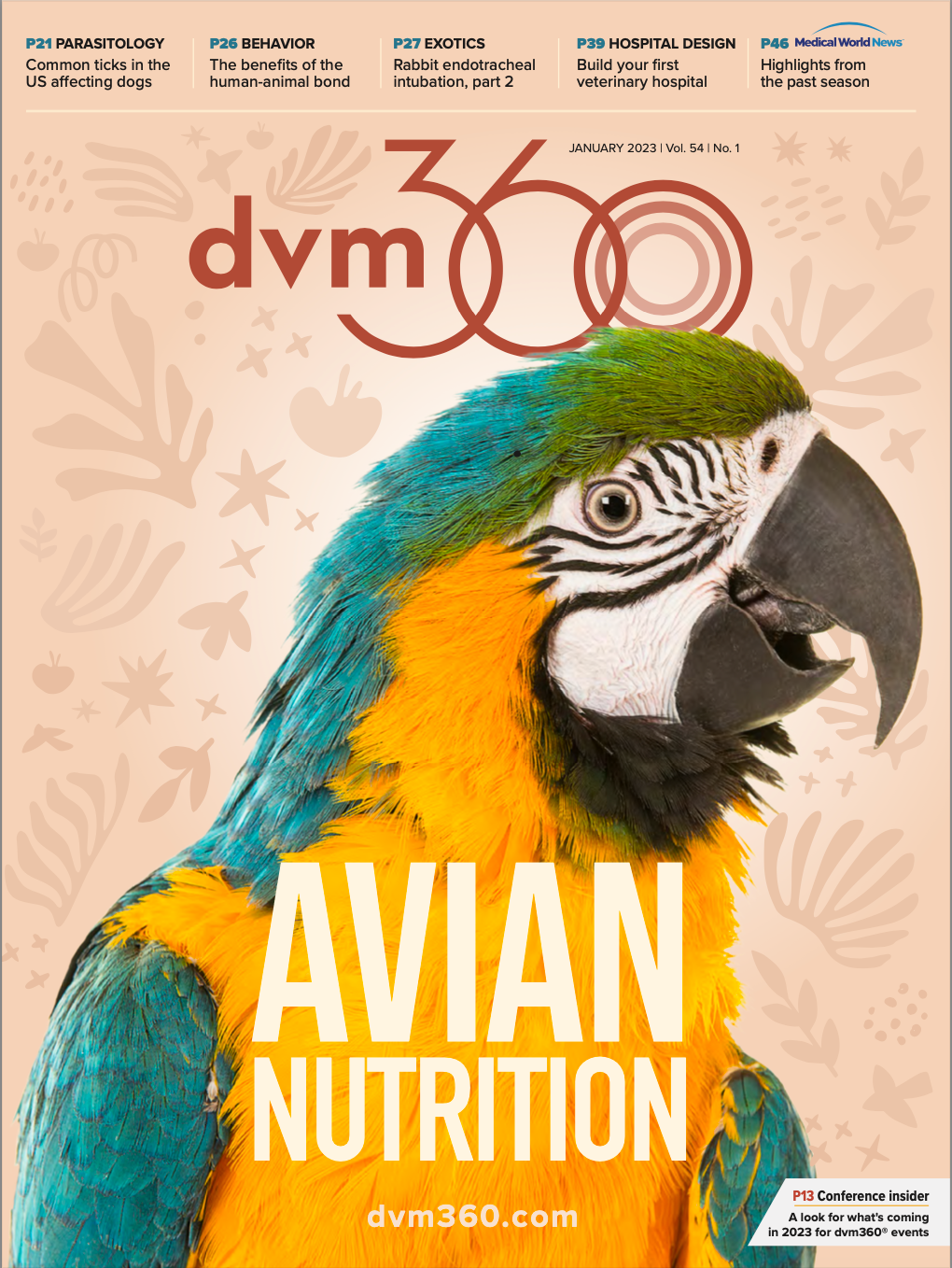The pet obesity epidemic: are we loving our pets to death?
A new veterinary clinic obesity prevalence survey aims to collect data
As the number of pets in America has continued to grow over the past decades, pets’ waistlines also have grown. This epidemic, along with a passion for both human and pet health, inspired Ernie Ward, DVM, CVFT, to create the nonprofit organization, Association for Pet Obesity Prevention (APOP) in 2005.1
pongmoji / stock.adobe.com

In 2007, APOP began conducting surveys, and the results confirmed that far too many companion animals were overweight or obese—53% of cats and 43% of dogs. By 2018, the numbers increased to an astounding 60% of cats and 56% of dogs being overweight or obese.1 Many studies have long provided evidence that being overweight or obese impacts life span and quality of life for both humans and animals. The most well-known and comprehensive dog study on this topic may be Nestlé Purina’s Life Span Study.2 The results revealed that maintaining a dog’s lean body condition extended its median life span by 15%. For dogs and cats, the problems associated with being overweight or obese are numerous, such as increased risks of developing osteoarthritis, cancer, and various behavior problems. Packing on the pounds is also associated with what many are calling an epidemic of diabetes mellitus in cats.3
In 2018, APOP published its Global Pet Obesity Initiative, a position statement now signed by 25 of the world’s largest veterinary medical organizations.4 APOP established a universal definition of pet obesity and a standardized body condition score (BCS) scale, and it declared that pet obesity is categorized as a disease in companion animals as it is in humans.
Though the veterinary data are objective, owners’ views on what indicates an obese or overweight pet are more subjective, and APOP discovered their perceptions over the years have changed. In other words, your average great-grandmother might have called her cat or dog “very chubby,” whereas pet owners today consider an animal of the same weight and same BCS quite acceptable. This has been dubbed “the fat gap.”5
“According to our 2021 Weight Management, Nutrition, and Pet Food Survey, 39% of dog owners and 45% of cat owners consider their pets overweight or obese. This contrasts with numerous reports indicating over 50% of dogs and cats are overweight or obese. The majority of pet owners and veterinary professionals believe pet obesity is a disease, with 72% of pet owners and 87% of veterinary professionals responding ‘yes,’ ” Ward said.
At some level, owners know that being overweight or obese can’t be good for their pets. Still, the numbers of overweight and obese animals continue to escalate. Are owners loving their pets to death? The human-animal bond is at an all-time high. More cats have become exclusively indoor pets, and approximately 50% of all dogs share a human bed.6 Yet it appears the number of overweight and obese pets isn’t declining.
“Obesity is a complex disease with many causes and contributors. We need to start by raising awareness among pet parents on how to recognize unhealthy body conditions in their dogs or cats,” Ward said. “We also must do a better job educating pet parents about the increased health risks and reduced life expectancy and quality of life associated with obesity. Veterinarians require more precise diagnostic tools than judging pet feeding behaviors and body condition scores. We also need more effective treatments than ‘feed less, exercise more.’ If simply eating less food and exercising more worked with every human or pet, we wouldn’t continue seeing escalations in human and pet obesity rates worldwide.”
To address this, APOP recently released a veterinary clinic obesity prevalence survey and also a survey for pet owners to complete.1 Ward said veterinary participation in the survey is vital because taking a next step is difficult without data. “Our ultimate goal is to end pet obesity. Until we achieve that, we will continue to be dedicated to the awareness, prevention, and treatment of pets with obesity,” Ward said.
Steve Dale, CABC, writes for veterinary professionals and pet owners, hosts 2 national radio programs, and has appeared on TV shows, including Good Morning America and The Oprah Winfrey Show. He is on the dvm360® Editorial Advisory Board as well as the boards of the Human Animal Bond Association and EveryCat Foundation. He appears at conferences around the world. Visit stevedale.tv.
References
- Association of Pet Obesity Prevention. Accessed December 14, 2022. https:// petobesityprevention.org
- Kealy RD, Lawler DF, Ballam JM, et al. Effects of diet restriction on life span and age-related changes in dogs. J Am Vet Med Assoc. 2002;220(9):1315- 1320. doi:10.2460/javma.2002.220.1315.
- Dale S. Diabetic pets is an epidemic. November 20, 2012. Accessed December 14, 2022. https://stevedalepetworld.com/blog/diabete-pets-an-epidemic
- Ward E, German AJ, Churchill JA. The Global Pet Obesity Initiative Position. Association for Pet Obesity Prevention. 2018. Accessed December 14, 2022. https://petobesityprevention.org/global-pet-obesity-initiative
- Ward E. The fat pet reality gap: why good owners let their
pets gain weight. VetStreet. February 7, 2012. Accessed
December 14, 2022. https://www.vetstreet.com/our-pet-experts/ the-fat-pet-reality-gap-why-good-owners-let-their-pets-gain-weight - 2021-2022 American Pet Products Association National Pet Owners Survey. American Pet Products Association. https://www.americanpetproducts.org/ pubs_survey.asp
